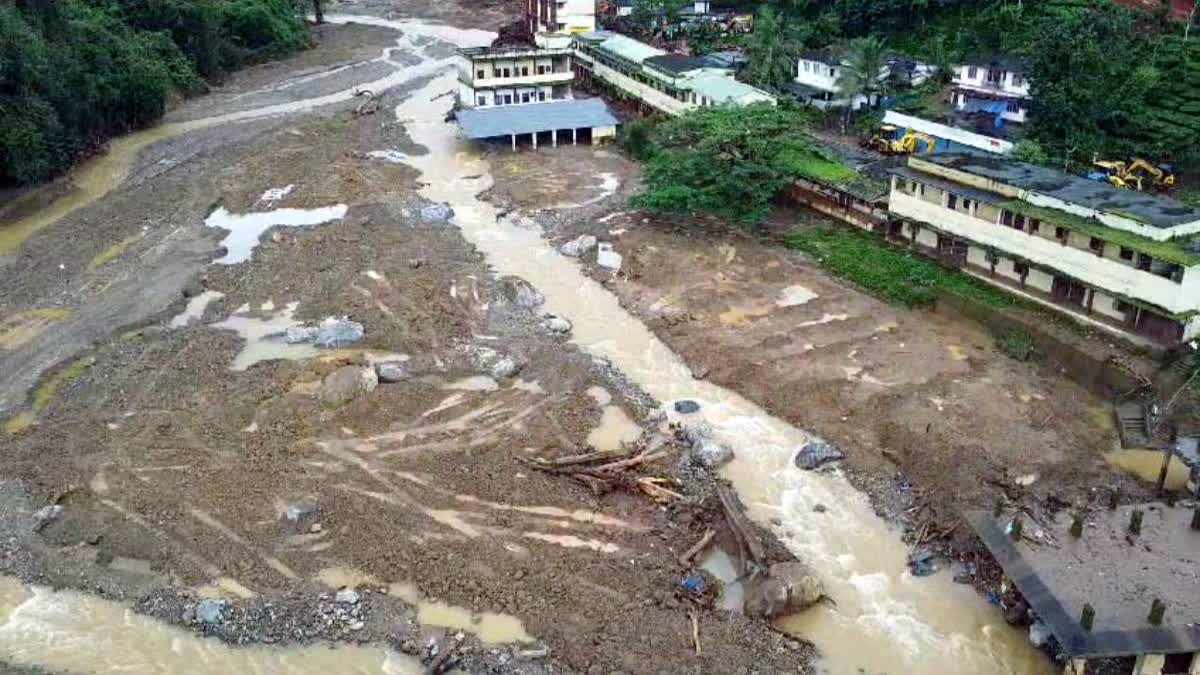Dehradun: It sounds strange but true that without serial landslides in the Himalayan region, human civilisation could not have evolved and the rich biodiversity in the higher altitude would have never developed.
Landslides are a major problem across the country from the southern tip of Wayanad to Mandi in the north Indian states of Himachal Pradesh and Uttarakhand. The arterial road to Kedarnath has seen many landslides this year. While the government has issued many landslides, scientists are always exploring ways to prevent such disasters to minimise loss of lives and properties.
Another untold and unheard aspect of deadly landslides on mountains is the periodic modification of landforms. Ever since the rise of the Himalayas, this geomorphic is an ever-happening process which can't be controlled by anthropological intervention as it may turn against the law of gravity. As much as we, AAP and the government want, it is impossible to control these landslides. This is because it will be against nature's law of gravity.
Senior scientist Piyush Rautela, who has been working in the Uttarakhand disaster management department for over three decades, said no human lives would have evolved in the Himalayan range in Uttarakhand without the geomorphic alterations, especially landslides.
He said there is a bounty of rain in the mountains of Uttarakhand. But the water rolls down rapidly. Even the groundwater is sparse as landslides block the rainwater from reaching the aquifer.
The landslides form new soil layers which provide ample fertility for crops than a hilly land. "In this way, people living in our area understood the natural phenomenon very well. People who came here initially understood how benefits could be reaped from this. People got drinking water and working water for farming," he said.
According to Rautela when human civilisation developed in the Himalayas hundreds of years ago, people at that time took care of the mountains as lives flourished there according to the pristine laws of nature. Olders understood this phenomenon that while landslides are beneficial for them in terms of water and agriculture, they can also be dangerous. That is why the older settlements were developed on higher ground near the floods and large landslides.
Uttarakhand has many such old villages or primordial settlements built on top of solid rocks. Traditional villages in all parts of the state were built keeping these things in mind. However, they were dependent on the landslide area for water and agriculture.
Rautela said the early settlers in the Himalayas prioritised their safety over convenience. They did not build their houses directly on top of the fragile land as they knew it to be risky. The availability of water and farmlands also influenced their decision to settle. In modern terminology, it is called Caring Capacity. The early people didn't live in one settlement for long and often shifted to new lands suitable to their needs.
The present scenario is diametrically opposite to that as people prefer convenience over the geological balance. Some Himalayan regions have breached their carrying capacity as the boom in tourism and other anthropological activities have put immense pressure on the once-serene region.
Also Read:
- ‘Don't Want To Open A Pandora Box…’, SC Rejects Plea Alleging Contempt Of Demolition Order By 3 States
- Uttarakhand: Half-Naked Female Body Recovered From Bag In Mohanpur Area
